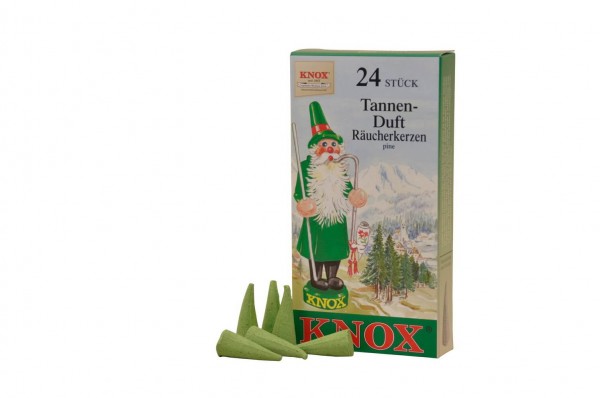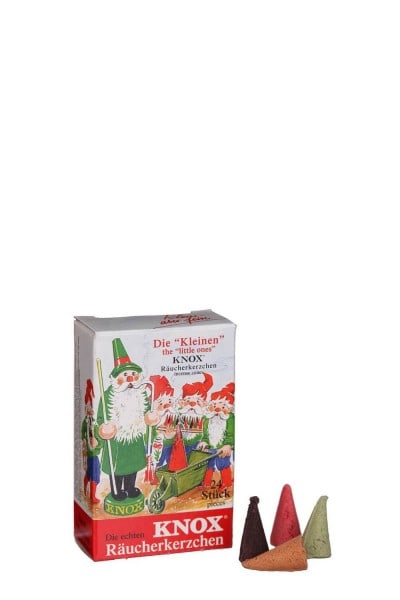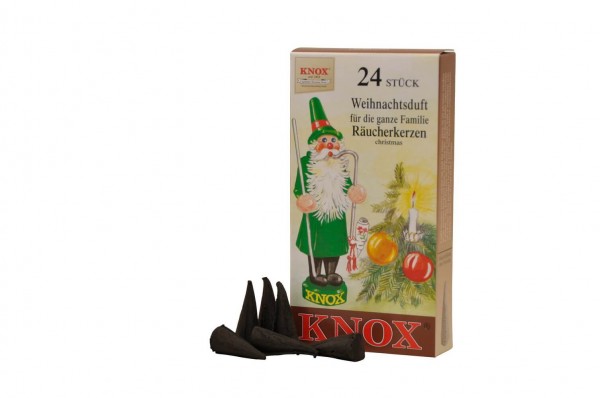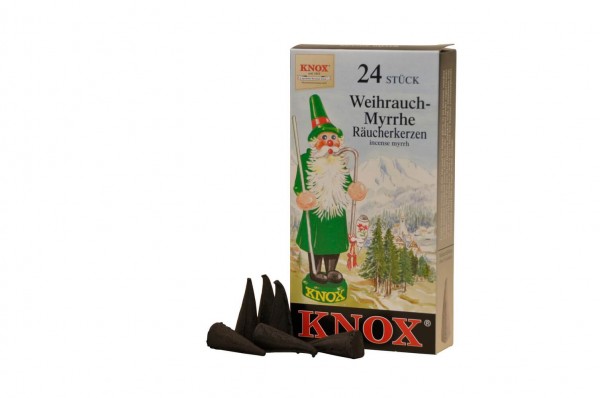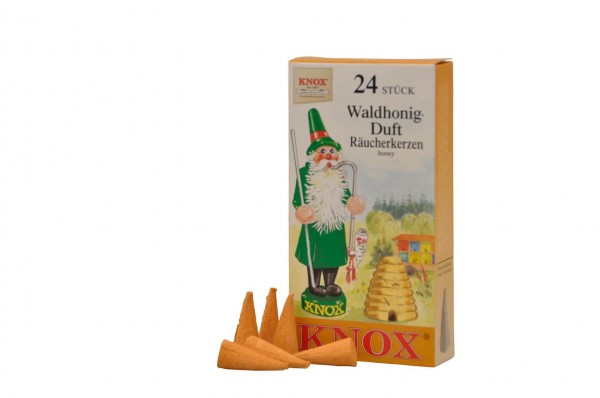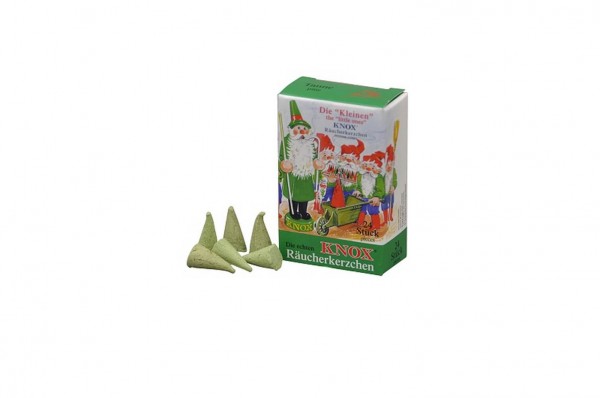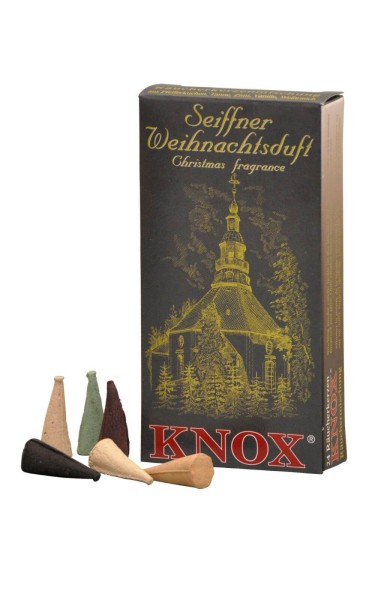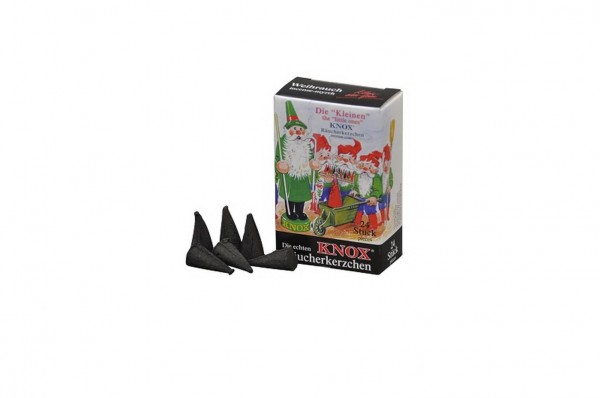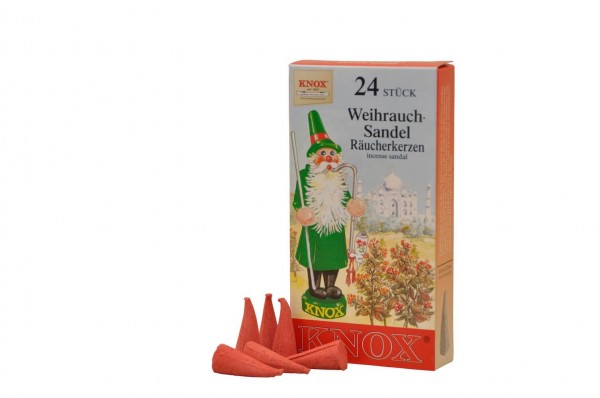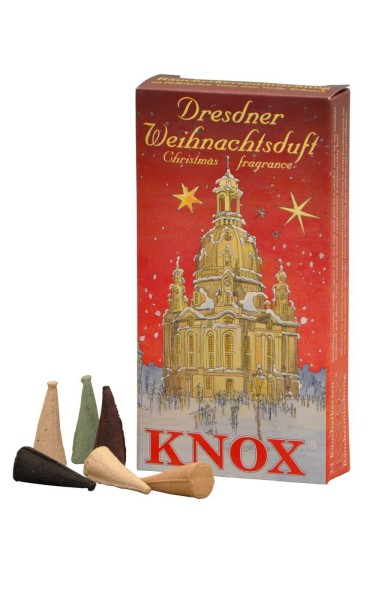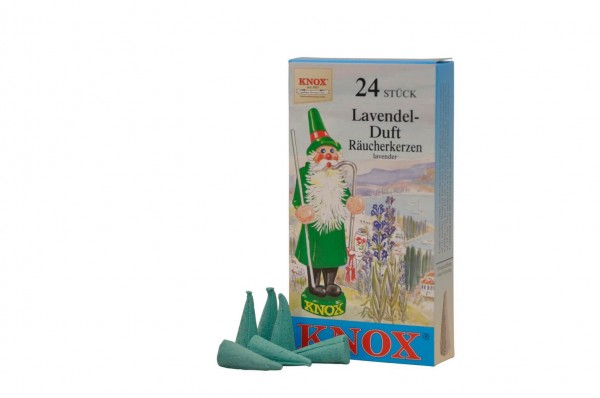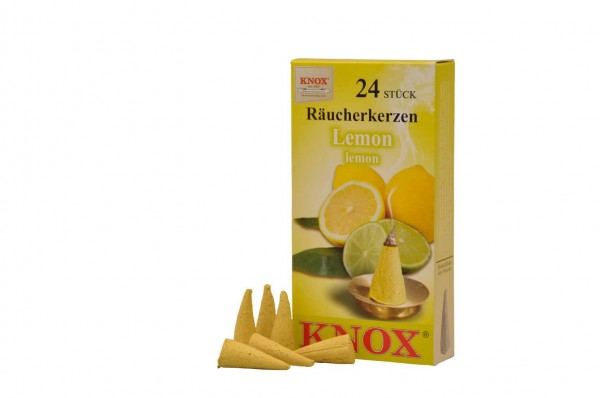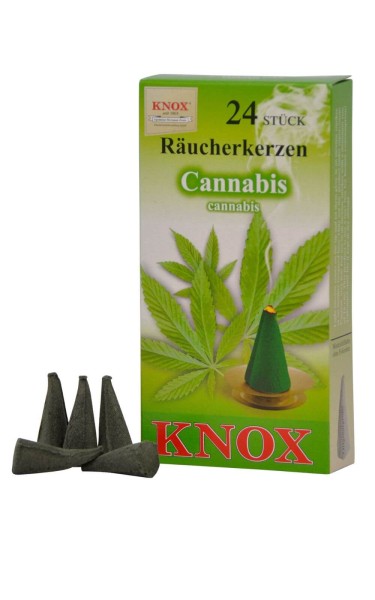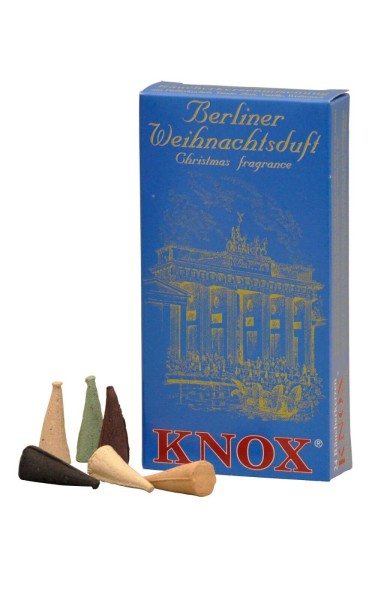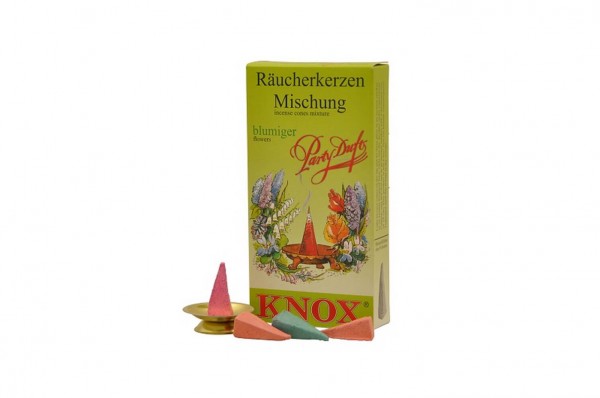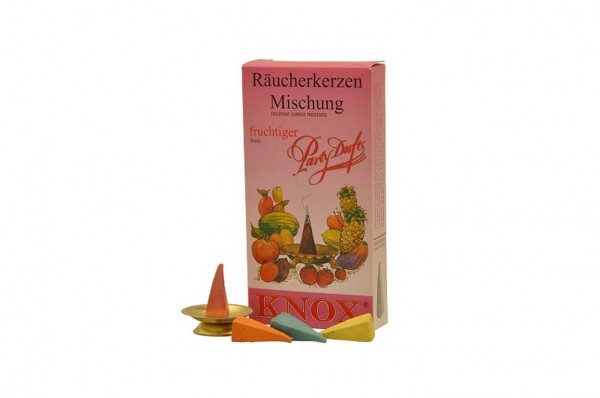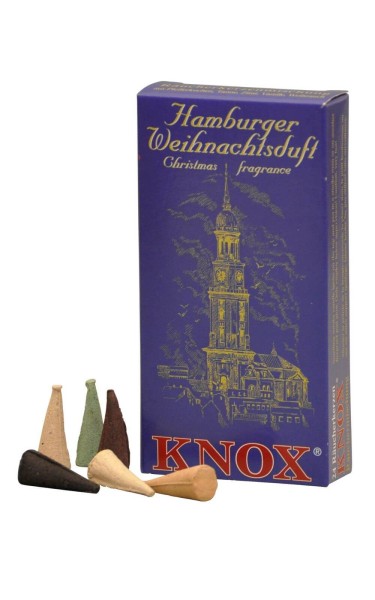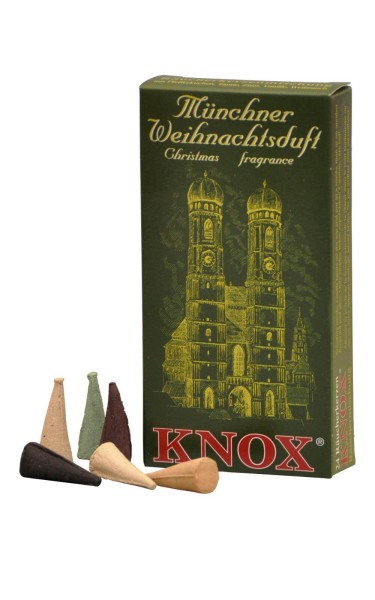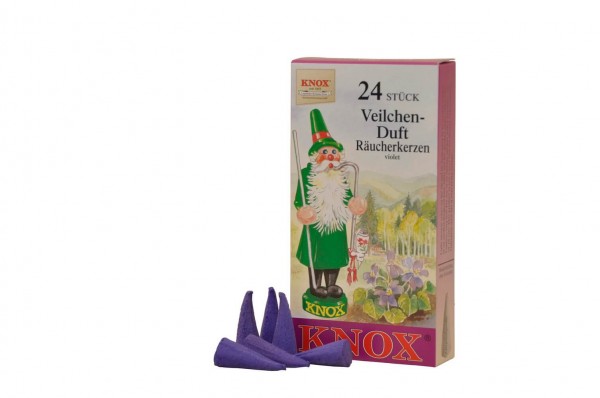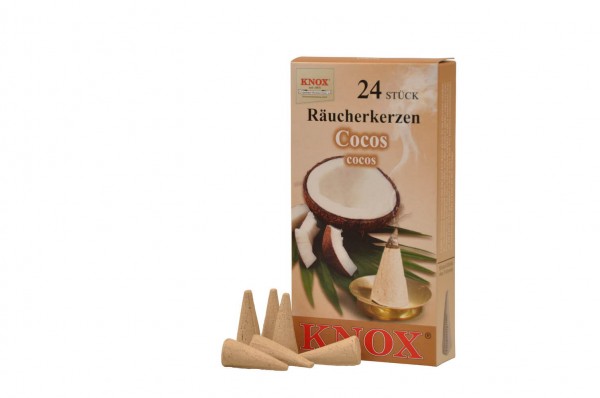A fragrant Christmas with incense scents from Knox
Incense cones are manufactured in a variety of scents, you can purchase them in traditional scents such as frankincense, fir and cinnamon, but also in honey, chocolate, violet, lemon and many other variations.
When did incense cones originate?
The use of incense is common in many religions. The history of incense cones begins around 1750 in Crottendorf in the Erzgebirge, when incensing was still used for therapeutic purposes. When the Christmas tradition came up in the middle of the 19th century, incense cones spread beyond the Erzgebirge. Knox incense cones were created in the 1950s when Hermann Koch secured this brand name.
How are incense cones made?
The main ingredient used to make incense cones is wood flour or charcoal. As with any baking recipe, the other ingredients make the result unique. Selected natural resins, berries, herbs, oils or scented wood refine an incense cone. It gets colorful with water-soluble, non-toxic food coloring. Provided with natural binding agents and water, the small cones are formed. If you dare, you can try it yourself.
How do I light an incense stick correctly?
Incense cones are often purchased in conjunction with incense smokers, smokehouses or incense burners. The incense cones are also popular against mosquitoes in summer. Therefore the upper part of the figure/house has to be removed first. The incense cone is lit at the tip with a lighter or a match. Then the incense should be blown on briefly so that the tip begins to glow orange. The incense cone is then immediately placed on the small metal plate in the middle and the upper part is placed over it. Please make sure that the cone does not touch the wood. With guidance and supervision, even older children can light incense cones. Please be careful: never let an incense cone burn down unattended!
Why isn't my incense smoker smoking/drawing properly?
We encountered this question particularly often during the Christmas season. There's an incense cone in the smoker, smokehouse or smoker and no smoke comes out, what's the matter? Here you should know that there is always an air inlet and outlet opening for an object with incense cones. Normally, the air enters at the base and exits through the mouth or chimney. Therefore, please check these openings for dirt first. New items may still have some wood chips in the holes that you can carefully remove. These openings can also become clogged after years of smoking. A pipe cleaner will help here. Also, beards or pieces of clothing or accessories can cover the holes, please check whether everything is free and an unhindered air supply is guaranteed. It often helps to preheat the hollow body a little so that the cold air does not suffocate the incense.
Another reason for "not smoking" can be the incense cones themselves. The right size plays a role here. The standard size of approx. 30 mm is suitable for normal incense smokers. For smoke bodies up to 15 cm, mini incense cones (approx. 15 mm) should be used. This ensures the correct relationship to the hollow body. Particular attention should also be paid to the dryness of the incense cone. Incense cones often come in a foil pouch. Minimal moisture can form there, which absolutely must be cleaned, because only dry incense cones burn up completely. So please take the cones out of the bag and let them dry out in the air or even better near a radiator or similar for a few hours to a few days. You will see, then nothing stands in the way of smoking pleasure.
What do I have to consider when handling incense cones?
The most important thing is: never let an incense cone burn down unattended. It seems safe in the hollow body, but it can fall over and cause a fire if there is a strong draft or a small jolt. There are also dangers when disposing of the ash from the burnt cone if the ash has not cooled sufficiently. The inside of the incense cone can still be hot even when it is no longer smoking. Please always dispose of your incense in a fireproof container or make sure the ashes are completely cool.
